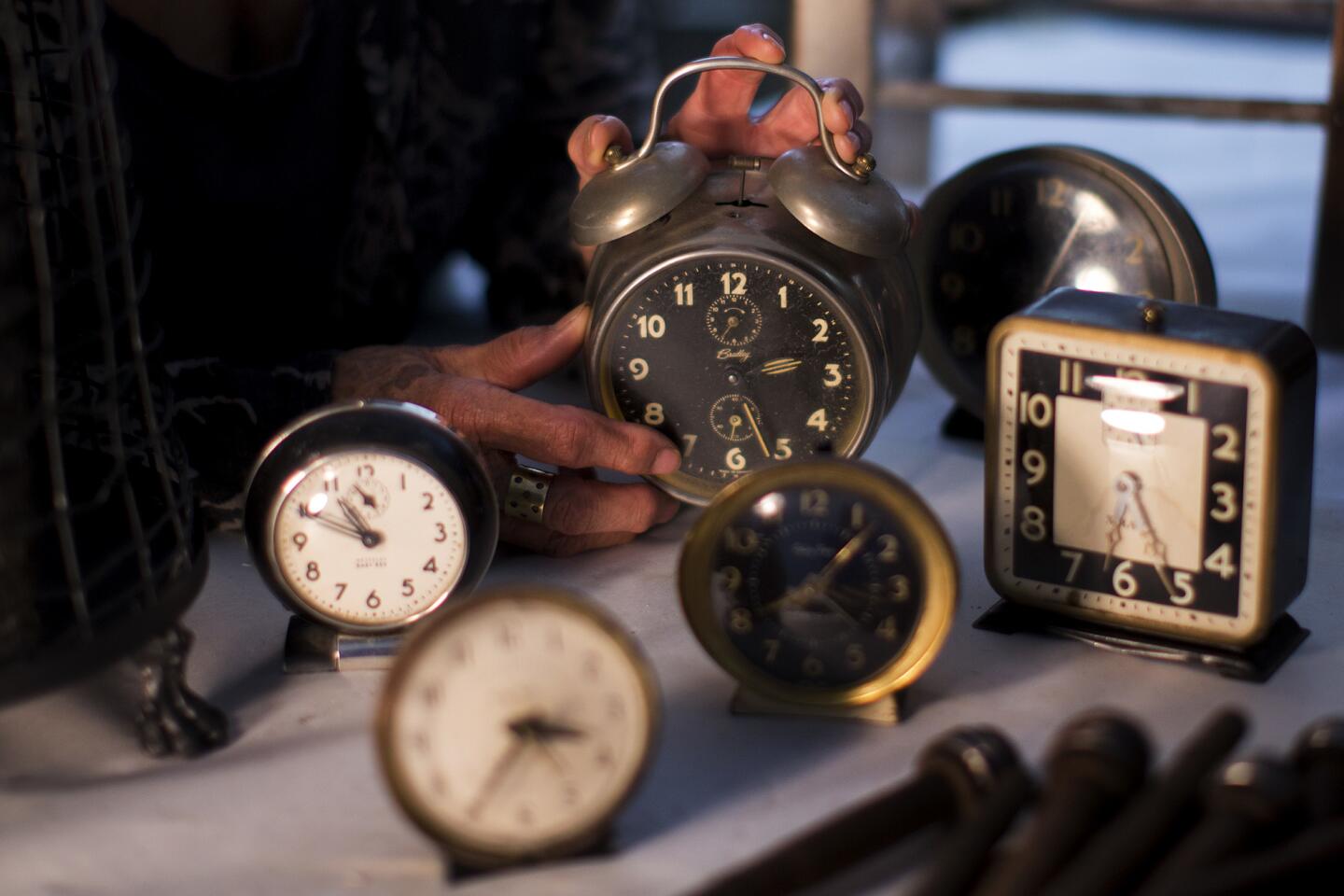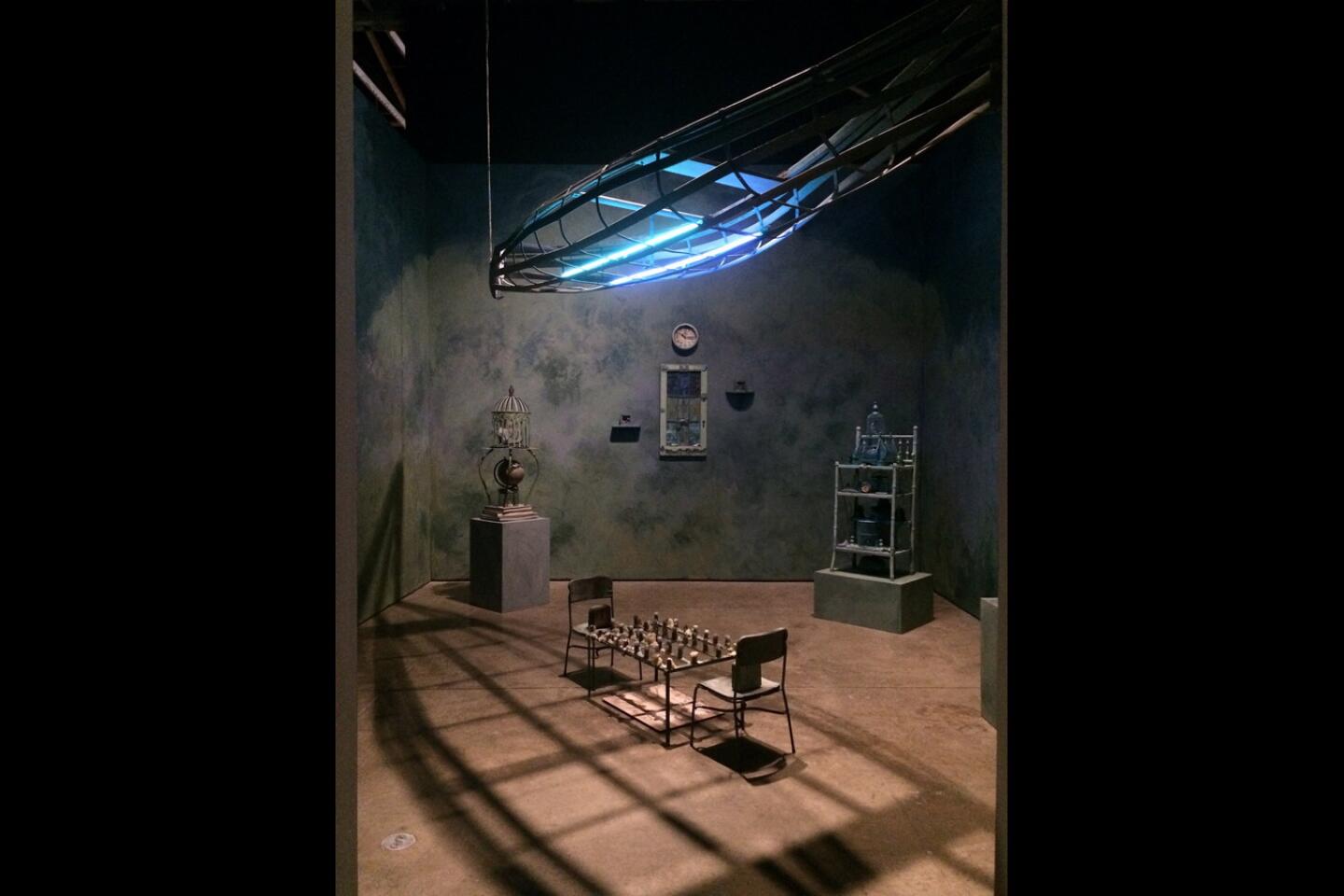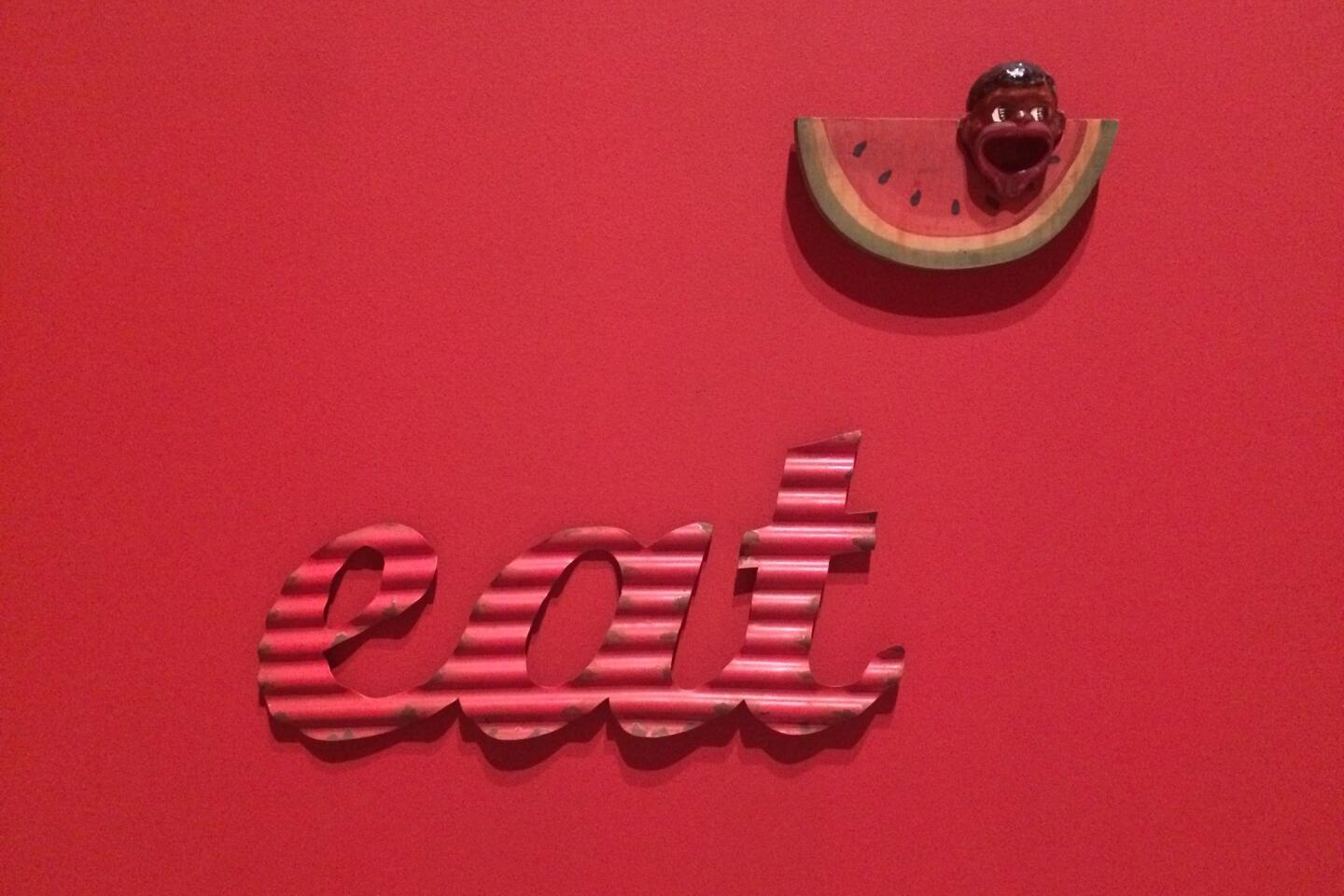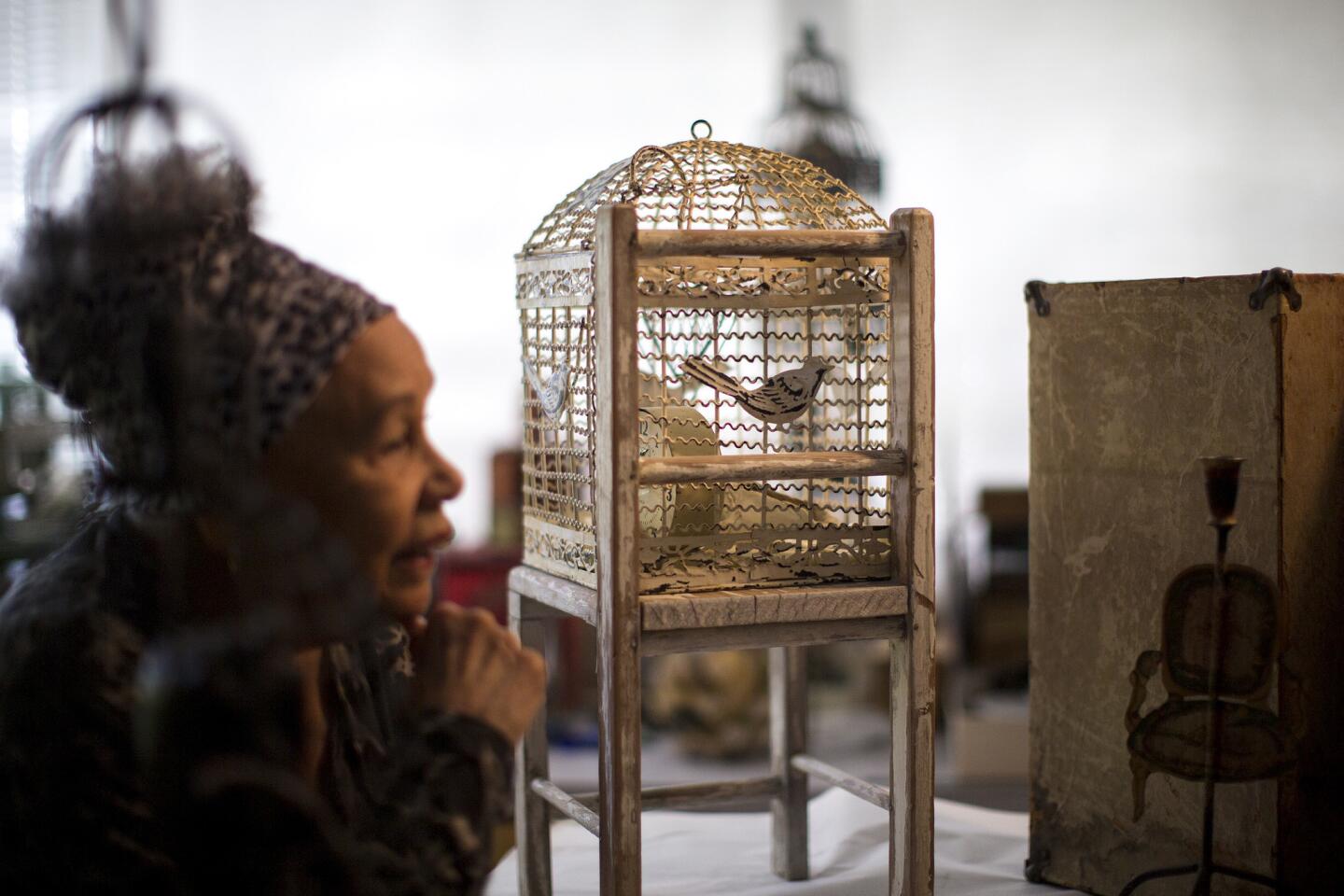For Betye Saar, thereâs no dwelling on the past; the almost-90-year-old artist has too much future to think about
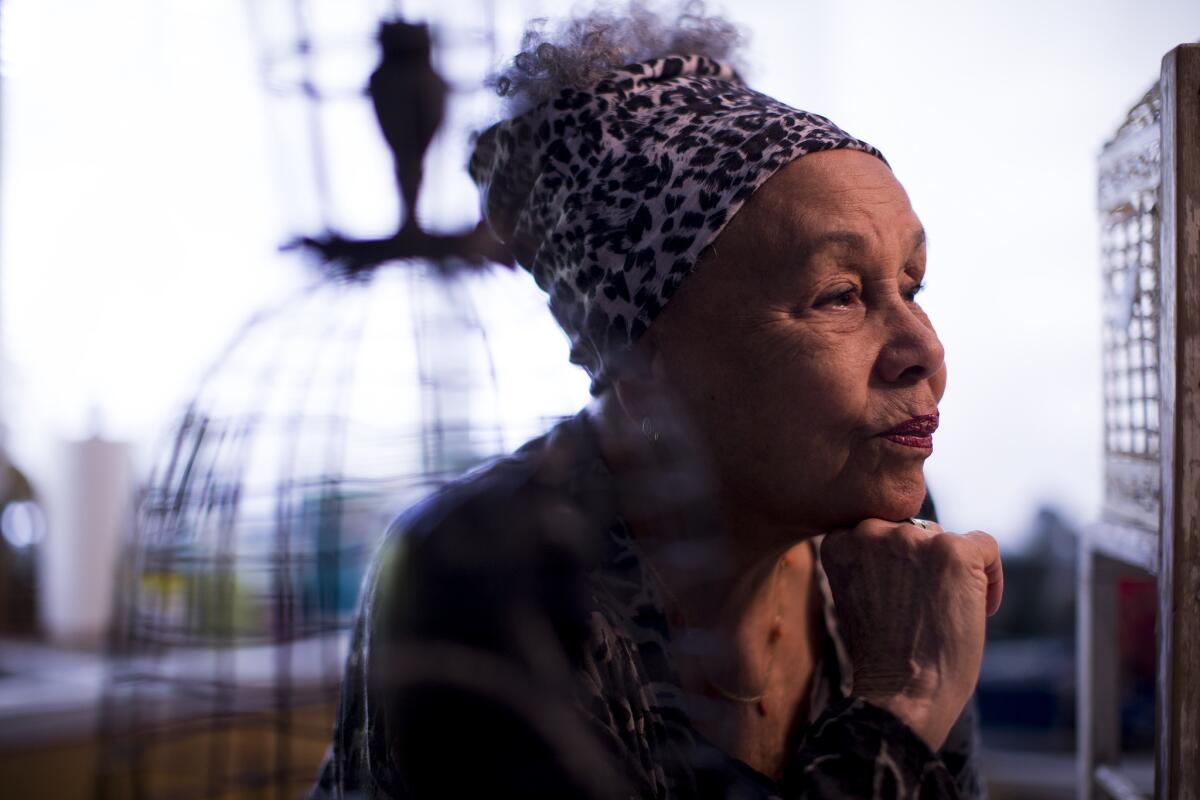
Betye Saar is an artist whose lifeâs work has consisted of creating careful arrangements of objects. So it should come as no surprise that her Laurel Canyon studio is also a careful arrangement.
Vintage clocks of all shapes and sizes line its walls. One table holds a graceful cluster of antique bird cages. Another is filled with masks and locks and colored glass in various shades of red â reminiscent of the all-red environmental installations sheâs created in recent years.
For the record:
10:05 a.m. May 2, 2016A previous version of this article stated that Betye Saarâs 2016 solo show at Milanâs Prada Foundation opens in October. It opens in September.
But at the heart of Saarâs sunny space sits a tidy collection of bric-a-brac that jolts with its unseemliness: a shameful harvest of ceramic mammies, tin renderings of pickaninnies and leering, thick-lipped figurines clutching pieces of watermelon.
See more of Entertainmentâs top stories on Facebook >>
In Saarâs hands, however, these notorious artifacts become something mighty. For more than 40 years, sheâs acquired debasing kitsch objects at flea markets and garage sales, and then transformed them. It began in 1972, with a breakthrough work titled âThe Liberation of Aunt Jemima,â a small, shoe box-size assemblage in which she took a stereotypical mammy figurine â and armed her with a rifle and a grenade.

Just three months shy of her 90th birthday, Los Angeles artist Betye Saar gives a tour of her studio and explains what keeps her inspired.
âItâs like they abolished slavery but they kept black people in the kitchen as mammy jars,â Saar says of what drove her to make the piece. âI had this Aunt Jemima, and I wanted to put a rifle and a grenade under her skirts. I wanted to empower her. I wanted to make her a warrior. I wanted people to know that black people wouldnât be enslaved by that.â
Over her career, Saar has quietly and firmly built a body of work that touches on the magical, the personal and the political â something she continues to do to this day.
In fact, just three months shy of her 90th birthday, Saar is busy. This week, she wraps up a sprawling survey of her work at the Scottsdale Museum of Contemporary Art in Arizona, a traveling exhibition previously at the Museum het Domein in the Netherlands â her first solo show in Europe.
See the most-read stories in Entertainment this hour >>
In September, she will have a pair of concurrent shows at her Culver City gallery, Roberts & Tilton, one of which will consist of an entirely new body of work. In September, she debuts an exhibition at the buzzy Prada Foundation in Milan, which will present work from various stages of her career.
And good luck trying to get on her calendar in 2017. Saar already has an exhibition planned at L.A.âs Craft & Folk Art Museum for the spring and will have works featured in important group shows at the Brooklyn Museum in New York and the Tate Modern in London.
âShe is almost 90 and still making work,â says Sara Cochran, director of the Scottsdale museum, who helped organize âStill Tickinâ,â Saarâs museum survey. âThere is a tenacity and grit there.â
Curiously, the one place Saar isnât showing is in L.A.âs major museums. Other than a single piece of assemblage on view in the Museum of Contemporary Artâs exhibition âThe Art of Our Time,â her hometown institutions have been rather aloof.
Saar is too preoccupied to let this bother her. Sheâs got several assemblages in various states of completion inside her studio. And in her spare time, she is working on a catalogue raisonnĂŠ of her lifeâs work: More than six decades of production covering themes of family, spirituality and those recesses of American history having to do with race.
Despite a serious case of jet lag â sheâs just returned from a site visit in Italy at the Prada Foundation with curator Elvira Dyangani Ose â Saar is bubbly and charming, gamely sitting down for an interview in her studio. âI could use a nap,â she confesses, as she eases her petite frame onto a Space Age exercise ball chair. âBut there is too much to do.â
Itâs this work ethic that has led to her prolific output. The exhibition in Scottsdale alone, a fraction of her output, features 135 works that survey the breadth of her techniques, which include print-making, collage and assemblage.
This includes a series of family portraits from the â70s rendered as collages on vintage handkerchiefs and transformed into ghostly mementos. Deft arrangements of African effigies and elements of tarot become enchanted-looking assemblages that explore the mystical. And, of course, there are the political works, which take symbols of racism â statuettes of crows (for Jim Crow), the derogatory black memorabilia â and organize them into totems that channel humor and outrage.
Saar has even produced room-size environments. âAlpha & Omega,â on view in Scottsdale, features sculptures in chilly hues of blue, sitting below the hovering skeleton of a neon canoe â a dream-like scenario that conveys visions of otherworldly passages.
âSomething I admire about Betye is that she deals with grief,â says Cochran. âWe are a society that does not deal with grief. She gives gravitas to emotions that we just arenât used to giving much attention to.â
Something I admire about Betye is that she deals with grief ... She gives gravitas to emotions that we just arenât used to giving much attention to.
— Sara Cochran, director of the Scottsdale Museum of Contemporary Art
An artistâs beginnings
Saar was born Betye Brown in Los Angeles on July 30, 1926, the daughter of mixed-raced parents from Iowa and Louisiana. Her father died in his 30s, leaving Betye, then about 5, and her two younger siblings in their motherâs care. At that point, the family relocated to Pasadena to live with relatives, the city where the artist would spend the rest of her youth.
After graduating from high school, Saar spent two years at Pasadena City College before moving on to UCLA in 1947 â which, at the time, she says, was like âthis small, little rustic canyon.â There, she majored in design, with the idea of becoming an interior decorator.
âBeing from a minority family, I never thought about being an artist,â recalls Saar. âBut I could tell people how to buy curtains.â
After she graduated, she developed her own greeting card line. She also successfully teamed with fellow designer Curtis Tann to form Brown and Tann, an enamelware company that sold jewelry and other popular decorative objects out of Tannâs living room. Their work drew the attention of Ebony magazine, which featured the pair in its pages in fall 1951.
During this period, she met ceramist Richard Saar, the two married in 1952. and had three girls: Lezley and Alison, who are respected artists in their own right, and Tracye, a writer.
Saarâs entry into art was a bit of a happy accident. In the late 1950s, she enrolled at Cal State Long Beach. âI thought Iâd get my masterâs and teach,â she recalls. âThen one day I walked past the print workshop and I was like, âHeyyy!ââ
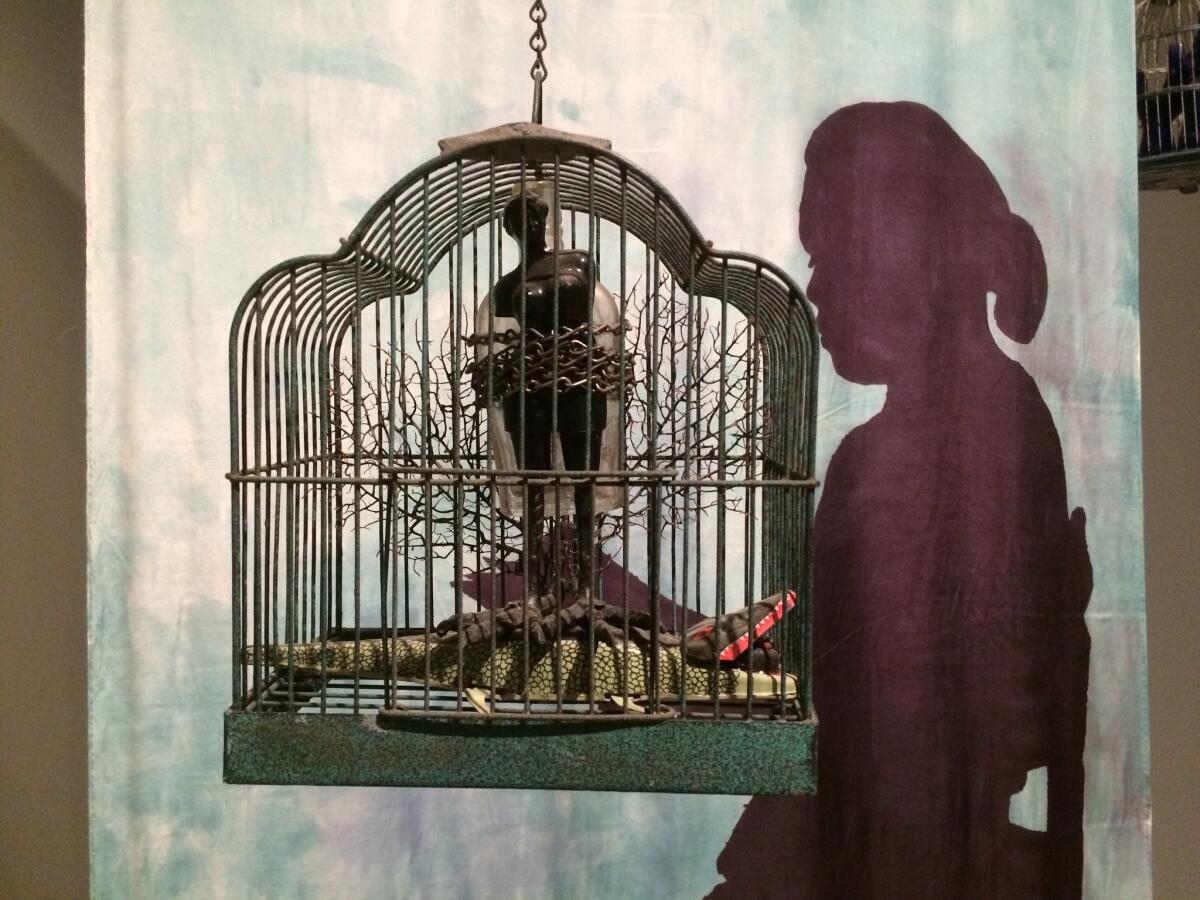
Saar never got the degree. She focused on printing instead. âI loved making prints,â she remembers. âThe move into fine art, it was liberating. It gave me the freedom to experiment.â
But the move into three dimensions took a serious turn around 1967, when Saar visited an exhibition of the works of Joseph Cornell at the Pasadena Art Museum (now the Norton Simon). Cornell was known for producing intimate box assemblages that used scavenged objects in moody and surreal ways. âI immediately started collecting stuff after I saw that show,â Saar says. âI started going to yard sales and estate sales.â
Two other important journeys would also make their mark on her work: A trip to Chicagoâs Field Museum, whose extensive collection turned her on to the power of African art, followed by a trip to Haiti in the early 1970s. âI said, âIf itâs Haiti and they have voodoo, they will be working with magic,ââ she says, ââand I want to be in a place with living magic.ââ
Saar was less interested in actual magic than in the visual ways in which magic could be conveyed. After these journeys, she began to replace European symbols with African ones, and she sought out used objects â including personal mementos â specifically because they were charged with previous life.
She was also affected by the spirit of the times.
In 1962, she relocated with her family to the Laurel Canyon home where she still lives and works.
âWe lived here in the hippie time,â Saar recalls fondly. âDown the road was Frank Zappa. There werenât that many houses. We had the long skirts and long hair, and it was very casual. Youâd go to a love-in or a concert.
âCannabis plants were growing all over the canyon,â she adds. I ask if she may have put those plants there to begin with. âIâm not going to say,â she replies with a laugh.
âWe were as hippie-ish as hippie could be,â she adds, with some seriousness, âwhile still being responsible.â
By the end of the decade, Saar and her husband had divorced. She remained in Laurel Canyon with the children and took on a series of part-time jobs that would allow her to continue to make work and manage the family. For a time, she designed costumes for the Inner City Cultural Center, among other places. She also taught â first at Cal State Long Beach, then at the Otis College of Art and Design.
In the 1970s, as the Black Power movement was ascendant, she observed it in her art â increasingly employing symbols tied to the African American struggle, from the cruel schematics of slave ships to the hackneyed images of black memorabilia sheâd begun collecting.
âIf you are a mom with three kids, you canât go to a march,â says Saar, âbut you can make work that deals with your anger.â
If you are a mom with three kids, you canât go to a march, but you can make work that deals with your anger.
— Betye Saar, artist
Artistic profile
A key player in myriad artist movements â from assemblage to feminist art to the Black Arts Movement of the â60s and â70s â Saarâs work now resides in the permanent collections of more than 60 international museums, including the Museum of Modern Art in New York and the L.A. County Museum of Art and the Museum of Contemporary Art in Los Angeles.
But while her international profile has grown and is bound to get even bigger after her exhibition at the Prada Foundation, local recognition has been slow to materialize. Her last solo museum show in Los Angeles was at the California African American Museum in 2011 and featured roughly two dozen recent works. Before that, she exhibited the installation âLimboâ at the Santa Monica Museum of Art in 1994.
Her most recent solo exhibition at one of the cityâs major museums was at MOCA in 1990. That show, âSanctified Visions,â paid tribute to writer Zora Neale Hurston and received positive critical notice.
âGiven Saarâs central role in the L.A. art scene since the 1970s, the lack of recognition she has received here is inexplicable,â says Steven Nelson, a professor of African and African American art history at UCLA. âL.A. is ever so slowly giving black artists their due. However, that attention is almost exclusively directed at male artists.â
MOCA chief curator Helen Molesworth, who included an assemblage by Saar in âArt of Our Time,â says part of the artistâs low institutional profile may be partly attributable to the nature of her work: Small and intensely personal at a time when the art world has been moving toward the big, the heroic and the ever more conceptual. âAnd to be in the crosshairs of both racism and sexism is no easy place,â she adds. âShe exists in those crosshairs.â
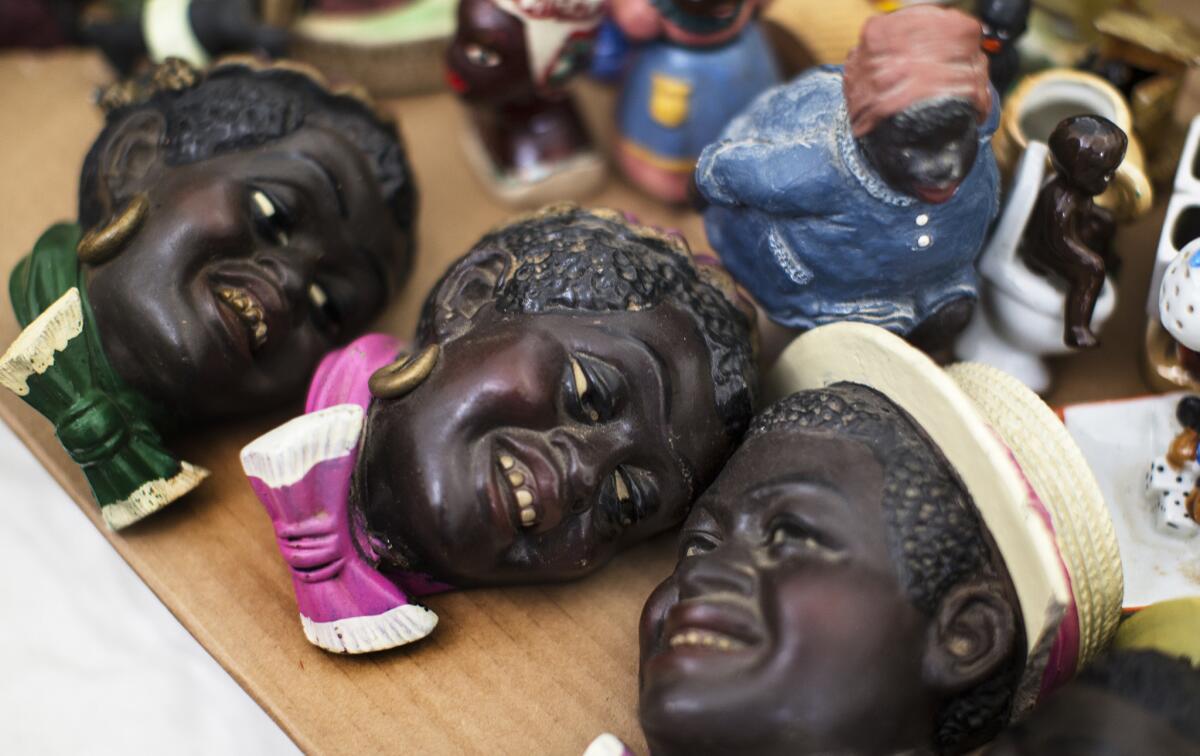
Saarâs show at the Craft & Folk Art Museum will provide a small corrective, but that exhibition â featuring fewer than two dozen of her washboard assemblages â hardly makes up for a full-blown, scholarly retrospective.
Donât bother asking her about these deficiencies. âIâve always done what I did and never felt I was competing with what was going on,â she says frankly.
In reviewing the decadesâ worth of works that went into the exhibition that traveled from the Netherlands to Scottsdale, she said she felt satisfied: âI said to myself, âYou were a good artist then, you are a good artist now.ââ
She claps her hands and lets out a boisterous laugh. Thereâs no time to dwell on the past. Betye Saar has too much future to think about.
Twitter: @cmonstah
------------
FOR THE RECORD
May 2, 10:06 a.m.: An earlier version of this article stated that Betye Saarâs solo show at Milanâs Prada Foundation opens in October. It opens in September.
------------
More to Read
The biggest entertainment stories
Get our big stories about Hollywood, film, television, music, arts, culture and more right in your inbox as soon as they publish.
You may occasionally receive promotional content from the Los Angeles Times.
